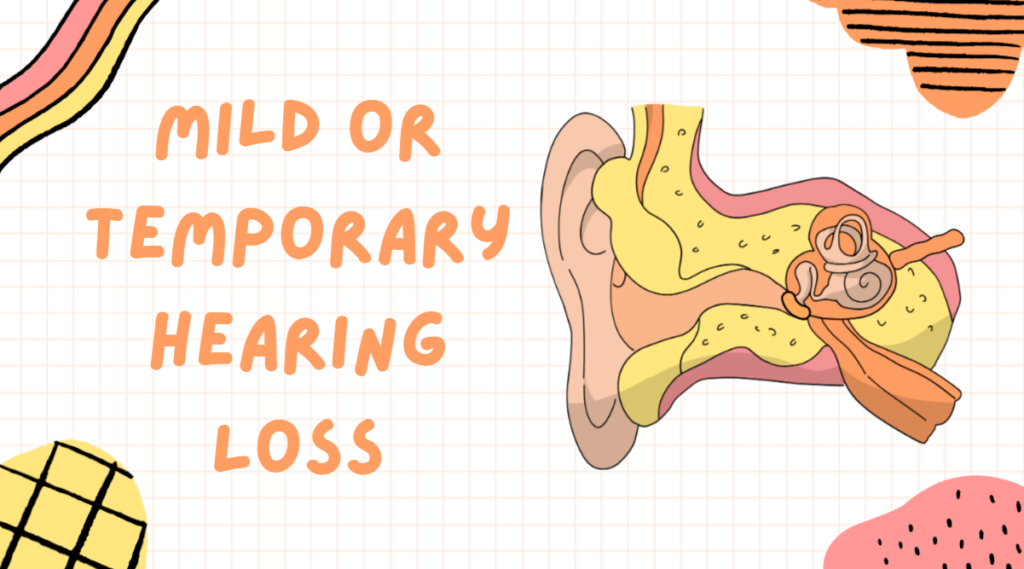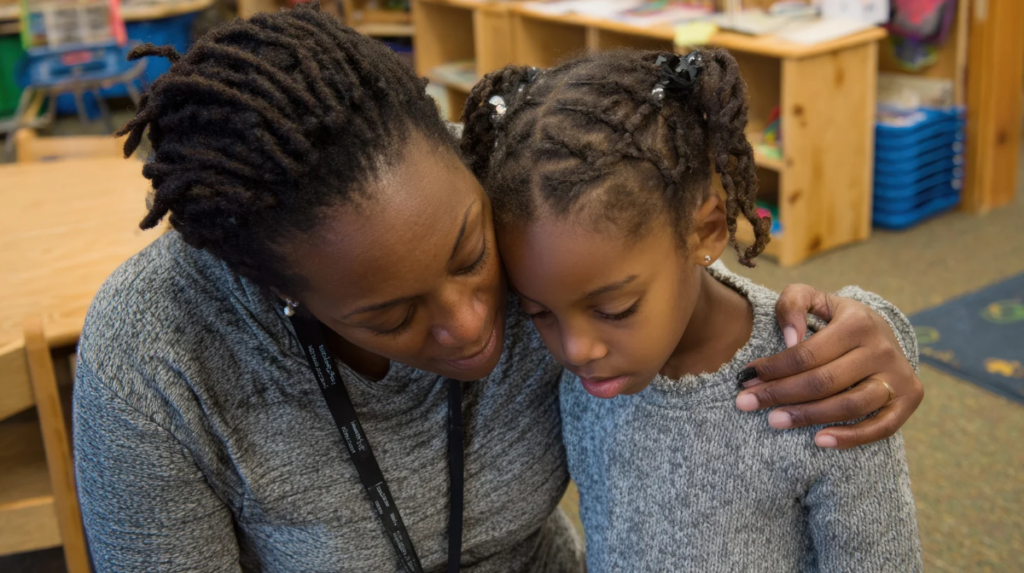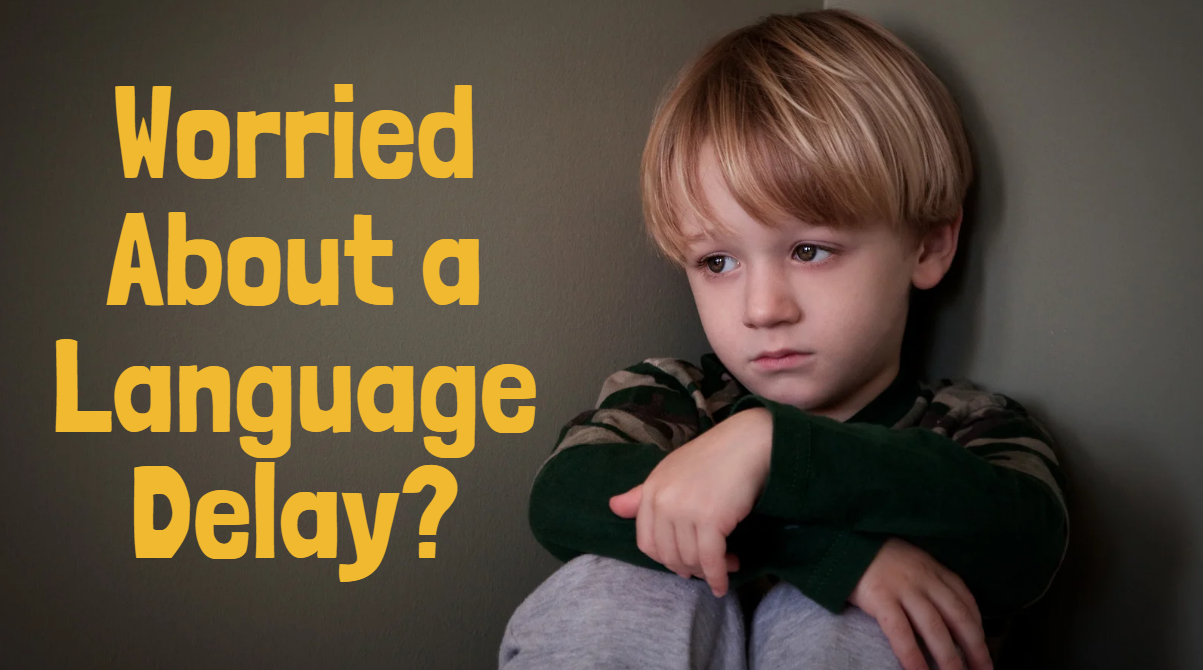You’ve probably seen it before — children around your toddler’s age chatting away, stringing together short sentences, or singing along to songs. Meanwhile, your little one might still be relying on gestures, single words, or sounds that only you can decipher. It’s natural to wonder: Is my child just taking their time, or could it be something more?
First, take a breath. Every child develops differently, and some are simply late bloomers. However, knowing what’s typical — and when to seek help — can make a huge difference in how your child grows, communicates, and connects with others.
In this guide, we’ll explore everything parents should know about language delays — from normal milestones and red flags to when and how to get support from a professional.
Understanding Language Development: What’s Typical?
To understand a possible delay, it helps to know what “normal” language development looks like.
Speech and language are often used interchangeably, but they aren’t the same thing:
- Speech refers to how we produce sounds and words (articulation, voice, fluency).
- Language is the system we use to understand and express meaning (words, grammar, comprehension).
Both grow rapidly in the first few years of life. Here’s a general timeline parents can use as a guide:
By 12 months:
- Babbles with variety (“ba-ba,” “da-da”)
- Says 1–2 simple words (like “mama” or “bye”)
- Understands simple directions like “no” or “come here”
- Uses gestures such as waving or pointing
By 18 months:
- Says around 10–20 words consistently
- Follows simple commands
- Uses gestures to supplement speech
- Tries to mimic familiar words
By 2 years:
- Uses 50 or more words
- Begins combining words (“more juice,” “mama go”)
- Points to objects when named
- Enjoys songs and nursery rhymes
By 3 years:
- Forms simple sentences (“I want toy,” “Daddy go work”)
- Understands “who,” “what,” and “where” questions
- Speech is mostly understood by family members
Every child is unique, but steady progress over time is key. If your child seems stuck at one stage for several months, it’s worth taking note.
What Causes a Language Delay?

Language delays can have many causes — some simple and others more complex. Let’s look at the most common factors professionals consider.
1. Hearing Difficulties
Even mild or temporary hearing loss from frequent ear infections can make it hard for a child to pick up new words. A child who can’t clearly hear sounds may not be able to imitate or understand them.
2. Developmental or Neurological Differences
Conditions like autism spectrum disorder (ASD), global developmental delay, or intellectual disabilities can impact how a child processes language or interacts socially.
3. Environmental Factors
Children learn language through interaction. Limited exposure to conversation — such as excessive screen time or reduced parent engagement — can delay speech and language growth.
4. Bilingual Households
Growing up bilingual doesn’t cause a delay, but it may slightly slow expressive language as children sort between two systems. Comprehension, however, usually remains strong — and bilingualism benefits long-term brain development.
5. Prematurity or Medical Conditions
Premature birth, neurological complications, or genetic syndromes can affect early brain development and delay communication milestones.
6. Unknown Reasons
Sometimes, there’s no clear medical or environmental cause. These children are often called “late talkers.” They understand language well but speak later than expected — and many catch up with extra stimulation or short-term therapy.
Common Myths
- “Boys just talk later.” – Some studies show minor differences, but a significant delay isn’t normal for either gender.
- “They’ll grow out of it.” – While some do, waiting too long can mean missing crucial early intervention opportunities.
Early Signs to Watch For: Red Flags by Age

Parents are often the first to notice when something feels “off.” Here are key signs to look for at different ages.
Before 12 months
- Doesn’t respond to sounds or their name
- Doesn’t babble or make back-and-forth vocal play
- Limited eye contact or social smiles
By 18 months
- No meaningful words yet
- Relies mostly on gestures instead of words
- Doesn’t imitate sounds or words
- Has trouble following simple commands
By 24 months
- Says fewer than 50 words
- Doesn’t combine two words (“want milk”)
- Hard to understand, even for parents
- Seems frustrated when trying to communicate
By 3 years
- Doesn’t form short sentences
- Speech mostly unintelligible to people outside the family
- Avoids talking or shows limited interest in interaction
Other warning signs
- Regression (losing words or skills previously used)
- Persistent frustration or tantrums linked to communication challenges
If several red flags appear, or if your gut tells you something isn’t right, don’t wait. Early support can make a tremendous difference.
How Professionals Diagnose and Support Language Delays

When you consult a professional, the process usually follows several steps designed to pinpoint the cause and create a plan.
1. Hearing Test
A hearing screening is often the first step to ensure your child can hear speech sounds clearly.
2. Developmental Screening
Your pediatrician or early intervention specialist may check your child’s overall skills — play, motor abilities, social interaction, and understanding — to rule out broader developmental concerns.
3. Speech and Language Assessment
A Speech-Language Pathologist (SLP) performs an in-depth evaluation to understand:
- Receptive language: what your child understands
- Expressive language: what your child can say
- Pragmatic skills: how your child uses communication socially
The assessment might include play-based observation, parent interviews, and standardized tools.
4. Parent Collaboration
Speech therapists don’t work in isolation. They guide parents on strategies to practice at home, reinforcing what’s learned in sessions.
Speech delay vs. language disorder
- Speech delay: Trouble with sounds and articulation.
- Language disorder: Difficulty understanding or forming words, sentences, or ideas.
A child may have one or both — and a proper evaluation helps clarify which supports are needed.
What You Can Do at Home to Encourage Language Growth

Whether your child has a diagnosed delay or not, home is the best place to nurture communication. Here are research-backed ways to help.
1. Talk with, not at, your child
Engage in two-way communication. Pause after you speak, giving your child a chance to respond — even with gestures or sounds.
2. Narrate daily routines
Describe what’s happening in simple, clear language.
“We’re putting on socks! One sock, two socks!”
Children absorb words faster when they’re linked to real experiences.
3. Expand on your child’s words
If your child says “car,” respond with “Yes! A red car!” This technique, called expansion, helps them learn how to build longer phrases.
4. Read together — every day
Picture books and nursery rhymes boost vocabulary and listening skills. Don’t worry about reading perfectly; focus on pointing, describing, and asking questions (“Where’s the cat?”).
5. Encourage imitation through play
Play is language in motion. Use pretend play (feeding dolls, driving cars) to model phrases like “baby eat” or “car go fast!”
6. Limit screen time
Screens can be educational, but nothing replaces real conversation. The American Academy of Pediatrics recommends limiting screens for toddlers under two and prioritizing shared, interactive viewing.
7. Celebrate Communication — in any form
Whether your child signs, gestures, or uses short words, celebrate it. Encouragement builds confidence and motivation to keep trying.
8. Involve Siblings and Caregivers
Encourage others in the home to interact verbally and patiently with your child. Repetition and exposure across different voices strengthen language learning.
When to Seek Professional Help: Don’t Wait and See

Many parents worry about “overreacting,” but it’s better to ask early than regret waiting.
Seek a professional evaluation if:
- Your child isn’t using words by 18 months
- Isn’t combining words by 2 years
- Has difficulty understanding simple directions
- Has lost previously acquired words
- Seems socially withdrawn or uninterested in communication
Where to start:
- Your pediatrician – This is often the first step. They can review your child’s development, rule out hearing or medical issues, and refer you to a Speech-Language Pathologist (SLP) or developmental specialist if needed.
- Early Intervention programs (for children under 3) – Available in most areas, these programs provide free or low-cost evaluations and therapy. They focus on helping children meet key milestones through play-based learning and parent coaching. You don’t need a referral to request an evaluation — parents can contact their local Early Intervention office directly.
- Speech-Language Pathologist (SLP) – You can also go straight to a licensed SLP, either through your healthcare provider or privately. The therapist will assess your child’s understanding, expression, and overall communication and design an individualized plan for growth.
Early intervention is proven to improve long-term outcomes. Language skills are the foundation for reading, social relationships, and school success — the earlier we build them, the better.
What Speech Therapy Looks Like
If your child begins therapy, sessions will likely feel more like play than work — and that’s intentional.
A typical session may include:
- Play-based learning using toys, songs, or books
- Modeling correct words and sentences
- Repetition and reinforcement to strengthen memory
- Games that target specific goals (like turn-taking, naming, or sequencing)
Therapy is tailored to each child’s age, personality, and level of need. The therapist constantly adjusts strategies based on progress.
Parental involvement is key
You’ll likely be coached on home activities that reinforce therapy goals. Daily repetition in natural settings — during meals, playtime, or bath time — accelerates progress.
How long does therapy take?
There’s no one-size-fits-all answer. Some late talkers catch up within months, while others may need ongoing support over years. Consistency, engagement, and family participation are crucial for success.
The good news
Many children with early speech or language delays make remarkable progress with the right help — and the confidence they gain can transform their entire learning experience.
Supporting Emotional and Social Development Alongside Speech

Language isn’t just about words — it’s about connection. Children who struggle to express themselves may also face frustration, low confidence, or difficulty forming friendships.
Here’s how you can support emotional growth along the way:
- Validate feelings: If your child gets upset while trying to talk, say, “I know you’re trying to tell me something. Let’s do it together.”
- Model patience and encouragement: Avoid finishing sentences for your child; instead, show you’re listening and waiting.
- Encourage social play: Group activities, story time, or playdates (with understanding peers) can build communication confidence.
Building language and emotional resilience together helps your child not only speak better but also feel understood.
Final Thoughts: Early Support Builds Lifelong Confidence
Language delays can be worrying, but they’re more common—and more treatable—than most parents realize. What matters most isn’t the delay itself, but how early it’s addressed. Every conversation, book, or playful exchange you share helps build your child’s foundation for communication, confidence, and connection.
At Genezen Home Health Care, we understand how important communication is to your child’s growth and confidence. We offer comprehensive speech therapy services for children and adults who may be experiencing speech or language delays. Our licensed and compassionate professionals assess each individual’s needs, create personalized therapy plans, and work closely with families to support progress at home and beyond. You can consult us directly — no referral needed — and we’ll guide you every step of the way, from evaluation to ongoing therapy. With Genezen, your loved one receives not just clinical care, but patient-centered support that helps them communicate, connect, and thrive.


